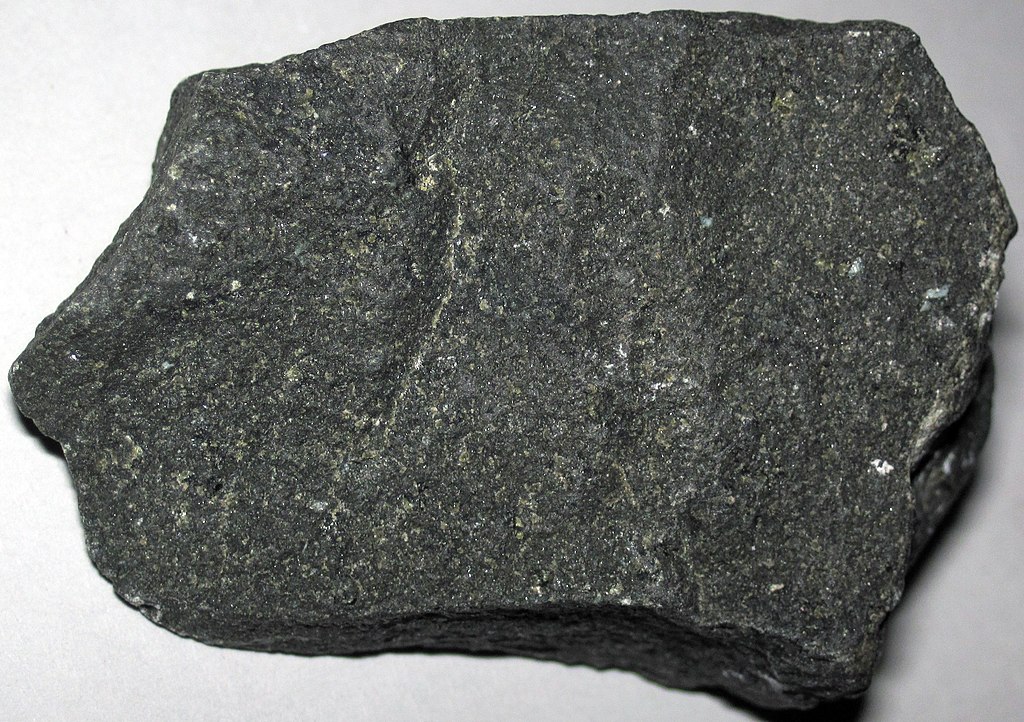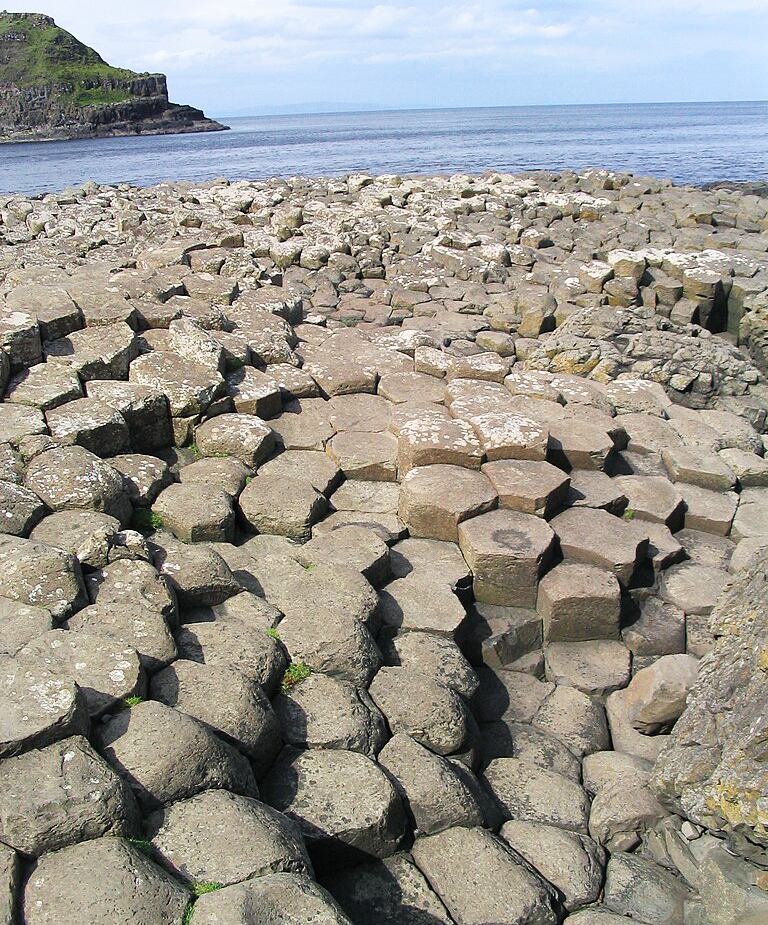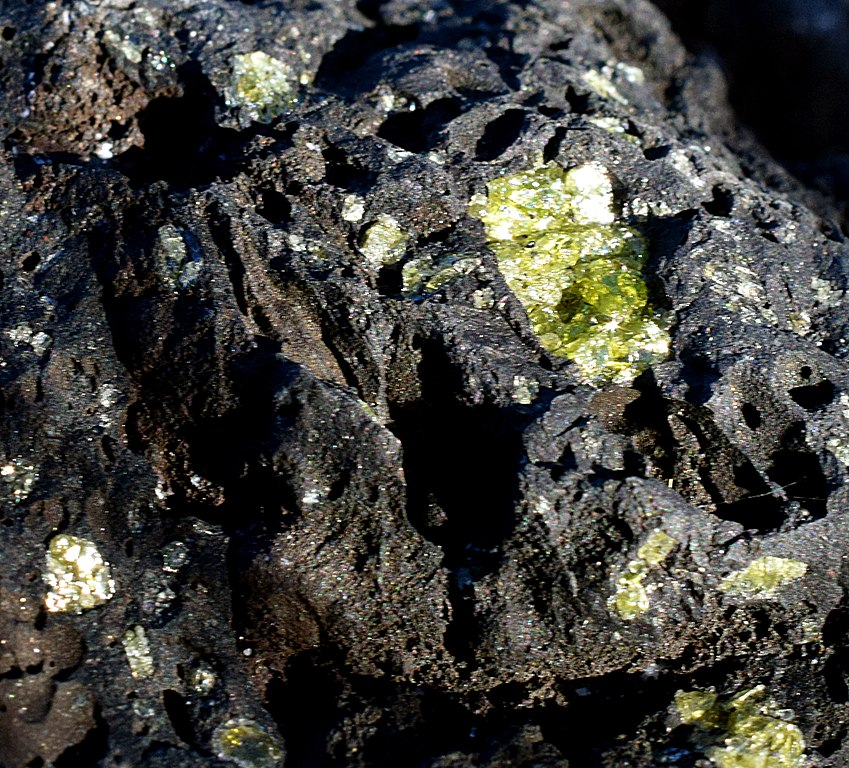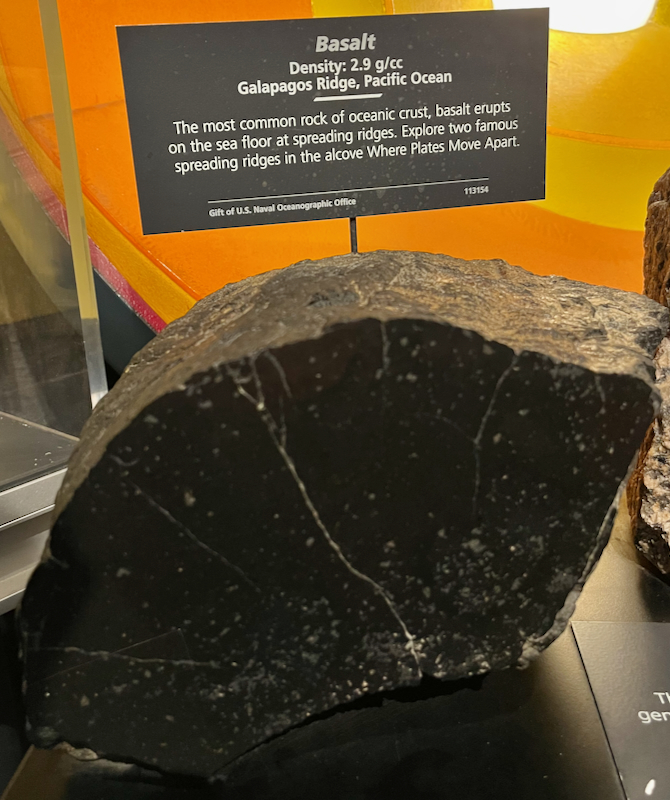Basalt
If you’ve ever seen the Devil’s Postpile in California or the Giant’s Causeway in Ireland, either in person or in pictures, you’ve seen large deposits of basalt rock. Not all basalt forms such impressive hexagonal columns, but basalt is the most common igneous volcanic rock on Earth. As noted in the information about igneous rock, basalt is a kind of rock that comes from lava—from a volcano or a crack in the earth—that solidifies (becomes solid) above ground, instead of underground. As long as the lava keeps pouring out, you keep getting more basalt. One really big example of this is a huge basalt deposit in India called the Deccan Traps, which some scientists are certain was created by a lava flow from the impact of the same meteorite that made dinosaurs extinct. If you happen to become an astronaut, you can also find basalt on the moon, Venus, and Mars! Although basalt is a pretty plain-looking grainy dark-colored rock, if you’re lucky there can be cracks and even large chambers in it, and those can be filled with crystals of minerals, such as prehnite, stilbite, apophyllite, and others, that are quite dazzling. The Deccan Traps are now famous for them.
| Formula | Group or Type | Shape | Hardness | Specific Gravity | Streak | Luster |
|---|---|---|---|---|---|---|
| — | — | — | — | — | — | — |



